1. Overview
Elizabeth Ruth Grable (December 18, 1916 - July 2, 1973), known professionally as Betty Grable, was a prominent American actress, pin-up girl, dancer, model, and singer. Her career spanned the 1930s and 1940s, during which her 42 films collectively grossed over 100.00 M USD. For 10 consecutive years, from 1942 to 1951, she was consistently ranked among the top 10 box office stars in the Quigley Poll, an achievement only matched by Doris Day, Julia Roberts, and Barbra Streisand, though surpassed by Mary Pickford with 13 years. The United States Department of the Treasury recognized her as the highest-salaried American woman in both 1946 and 1947, with her total career earnings exceeding 3.00 M USD. Grable's iconic status during World War II was cemented by her famous bathing-suit poster, which made her the era's top pin-up girl.
2. Early Life
Betty Grable was born Elizabeth Ruth Grable on December 18, 1916, in St. Louis, Missouri. She was the youngest of three children born to Lillian Rose (née Hofmann) and John Conn Grable, a stockbroker. Her elder siblings were Marjorie Lucille Arnold and John Karl "Jackie" Grable, though Jackie passed away before reaching two years of age. The Grable family had a diverse ancestry, including Dutch, English, German, Swiss German, and Irish roots. From a young age, Betty, nicknamed for her, was intensely encouraged by her mother to pursue a career as a performer. She frequently participated in and won numerous beauty contests, gaining considerable public attention. Despite her early successes and public exposure, Grable privately struggled with demophobia, a fear of crowds, and somnambulism. Her second cousin was the silent-film actress Virginia Pearson.
3. Career
Betty Grable's career began in the late 1920s and evolved through various phases, from uncredited chorus girl roles to becoming one of Hollywood's highest-paid stars and a cultural icon, before transitioning to successful stage and television work.
3.1. Early Career (1929-1939)
In 1929, at the age of 12, Grable and her mother relocated to Hollywood, California, shortly after the Wall Street Crash of 1929. To secure acting jobs for her daughter, Lillian Grable falsely claimed Betty was 15 years old to film producers and casting agents. During this period, Grable honed her skills at the Hollywood Professional School and the Ernest Blecher Academy of Dance. That same year, she made her uncredited film debut as a chorus girl in the Fox Studios all-star revue Happy Days. This initial success led to further uncredited chorus-girl roles in films such as Let's Go Places (1930) and New Movietone Follies of 1930 (1930).
In 1930, at 13, Grable signed a contract with producer Samuel Goldwyn under the pseudonym Frances Dean, becoming one of the original Goldwyn Girls. This group included future stars like Ann Sothern, Virginia Bruce, Claire Dodd, and Paulette Goddard. As a Goldwyn Girl, Grable appeared in minor parts in several films, notably leading the opening musical number "Cowboys" in the hit film Whoopee! (1930), starring Eddie Cantor, for which she received no on-screen credit.
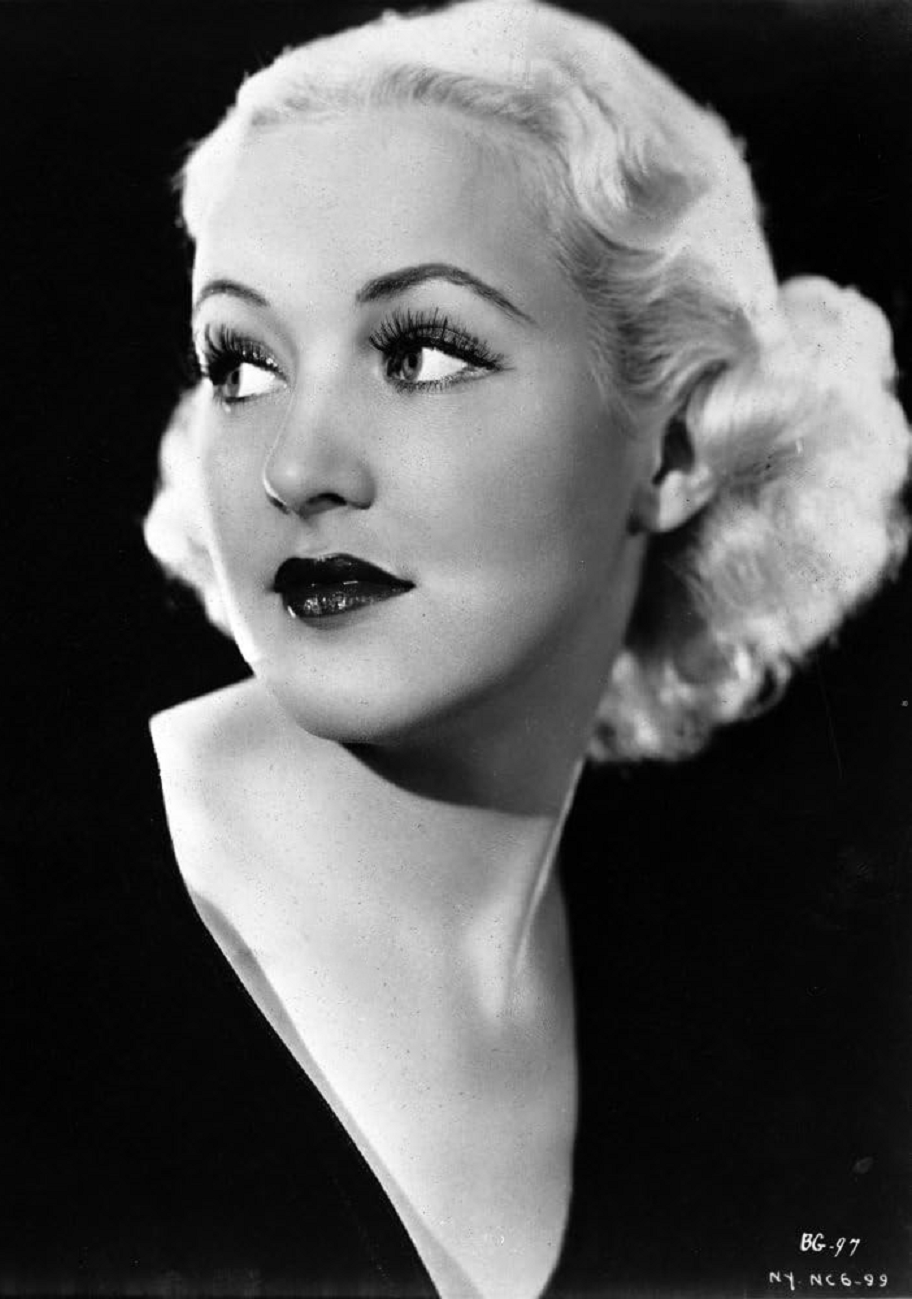
By 1932, at age 15, Grable secured a contract with RKO Radio Pictures, where she was enrolled in a series of acting, singing, and dancing classes at the studio's drama school. Her first film for RKO, Probation (1932), provided her first credited screen role. Despite this, for the next few years, she was often relegated to uncredited minor roles in highly successful films like Cavalcade (1933). She began to receive larger roles in films such as The Gay Divorcee (1934) and Follow the Fleet (1936).
After her time at RKO, Grable signed with Paramount Pictures. Paramount then loaned her to 20th Century-Fox to co-star in the adolescent comedy Pigskin Parade (1936). Despite Paramount's efforts to introduce her to a wider audience, her performance was overshadowed by Judy Garland. Upon her return to Paramount, Grable entered a new phase of her career, being cast in a series of college-themed films where she typically portrayed a naive student. These included This Way Please (1937) and College Swing (1938). In 1939, she appeared opposite her then-husband Jackie Coogan in Million Dollar Legs, a B movie comedy that inadvertently gave her the famous nickname "The Girl with the Million Dollar Legs."
When Million Dollar Legs failed to achieve the success Paramount had anticipated, the studio released her from her contract. Grable initially considered leaving Hollywood for a simpler life but ultimately decided to try Broadway. She accepted an offer from Buddy DeSylva to appear in his musical Du Barry Was a Lady, starring Ethel Merman and Bert Lahr. The play was an immediate critical and audience success, establishing Grable as a newfound star and attracting the attention of Darryl F. Zanuck, the head of 20th Century-Fox.
3.2. Breakthrough at 20th Century-Fox (1940-1943)
In a 1940 interview, Grable expressed her weariness with show business and contemplated retirement. However, she soon accepted an invitation for a personal appearance tour, which proved to be a turning point. The tour brought her to the attention of Darryl F. Zanuck, who, impressed by her performance in Du Barry Was a Lady, offered her a long-term contract with 20th Century-Fox. Grable remarked, "If that's not luck, I don't know what you'd call it."
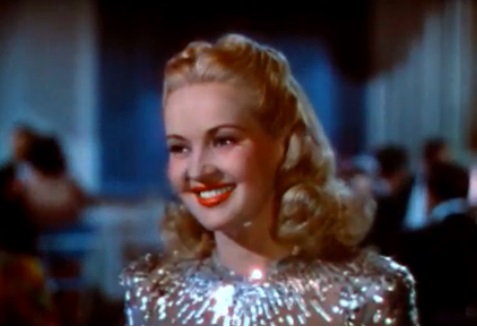
At the time, Zanuck was casting the female lead for the musical film Down Argentine Way (1940). The role was originally intended for Alice Faye, Fox's most popular musical star, but Faye had to withdraw due to an unspecified illness. After reviewing Grable's screen test, Zanuck cast her as Faye's replacement. This film, a lavish Technicolor musical co-starring Don Ameche and Carmen Miranda, became her first major Hollywood film. Grable's rendition of the song "Down Argentine Way" was considered a highlight of the movie.
Down Argentine Way was a critical and box-office success upon its release, with many critics hailing Grable as Alice Faye's successor. The film's triumph led to Grable's casting in Tin Pan Alley (1940), where she co-starred with Faye. As the Lily sisters, both actresses received favorable reviews. Despite rumors of a rivalry between them during filming, both Grable and Faye denied any feud, often expressing mutual admiration, and reportedly remained friends until Grable's death. Following Tin Pan Alley, Grable was again paired with Ameche in the hit musical Moon Over Miami (1941), which also featured the rising star Carole Landis.
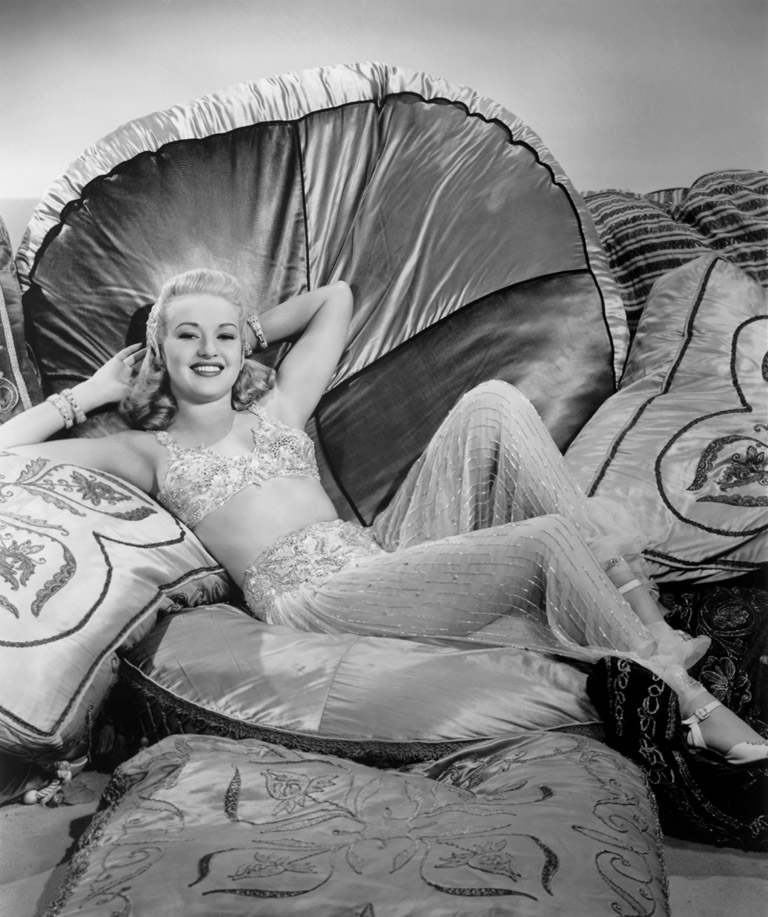
In 1941, Fox attempted to expand Grable's acting range and audience appeal by casting her in two more serious films. The first, A Yank in the R.A.F., released in September, co-starred heartthrob Tyrone Power. Grable played Carol Brown, who works for the Women's Auxiliary Air Force by day and as a nightclub singer by night. The film, while not considered propaganda, resonated with other movies of the era. It received positive reviews, with critics noting the strong on-screen chemistry between Grable and Power, and became a major box-office success, ranking as the fourth-most popular movie of the year.
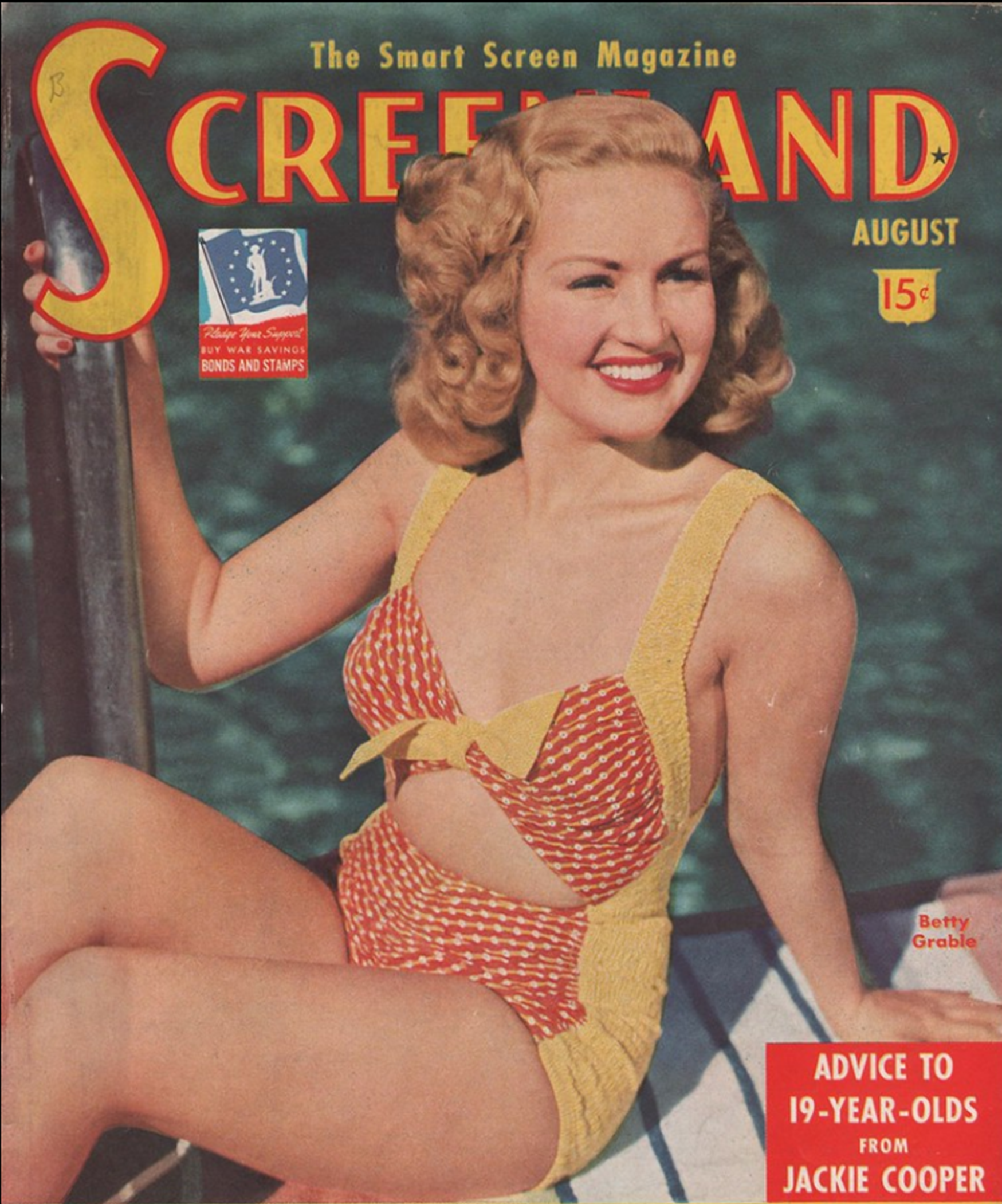
The second film, I Wake Up Screaming, released in November, gave Grable top billing as Jill Lynn, the sister of a murdered young model. This film marked her second pairing with Carole Landis and co-starred Victor Mature. Directed by H. Bruce Humberstone, it was a traditional black-and-white film noir blending suspense and romance. Grable's performance was well-received by most critics, and the film achieved reasonable financial success.
Grable's stardom continued to ascend with her role in Song of the Islands (1942), co-starring Victor Mature and Jack Oakie. The film's success led to her re-teaming with Mature in Footlight Serenade (1942), which also featured John Payne, where she portrayed a glamorous Broadway star. Fox then developed Philip Wylie's short story "Second Honeymoon" into a script tailored for Grable. The resulting film, Springtime in the Rockies (1942), directed by Irving Cummings, featured Payne, Cesar Romero, Carmen Miranda, and her future husband, bandleader Harry James. The film was an immediate hit, becoming Grable's biggest success to date, grossing over 2.00 M USD. Its success prompted Fox to increase her salary and grant her a wider choice over her film projects.
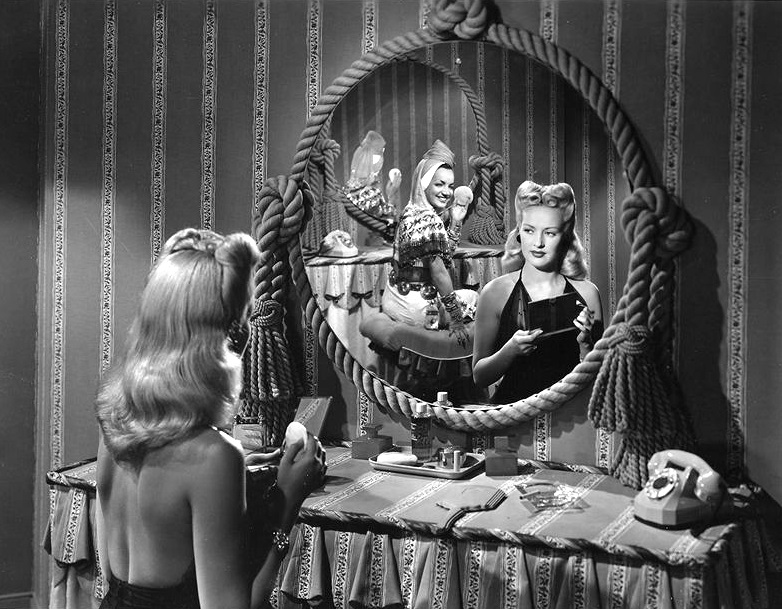
In 1943, Grable was voted the number-one box-office draw by American movie exhibitors, surpassing popular figures like Bob Hope, Gary Cooper, Greer Garson, Humphrey Bogart, and Clark Gable. Coney Island, released in June 1943, was a Technicolor "gay nineties" period musical co-starring George Montgomery. The film earned over 3.50 M USD at the box office and was well-received by critics. Her subsequent feature, Sweet Rosie O'Grady (1943), was equally successful financially, though it did not garner the same critical acclaim.
3.3. Stardom and Pin-up Era (1943-1949)
In 1943, Betty Grable collaborated with photographer Frank Powolny for a routine studio photo session. During the shoot, she posed in a tight, one-piece bathing suit. One particular pose captured Grable with her back to the camera, playfully smiling as she looked over her right shoulder. This photograph was released as a poster and quickly became the most requested image by G.I.s stationed overseas during World War II. Grable's pin-up photograph sold millions of copies, eventually surpassing the popularity of Rita Hayworth's famous 1941 photo. The image was later included in Life magazine's project "100 Photographs that Changed the World". Hosiery specialists of the era frequently highlighted the ideal proportions of Grable's legs, noting her thighs at 18.5 in, calves at 12 in, and ankles at 7.5 in. As a publicity stunt, her studio insured her legs for 1.00 M USD. Reflecting on her film career, Grable famously quipped, "I became a star for two reasons, and I'm standing on them."
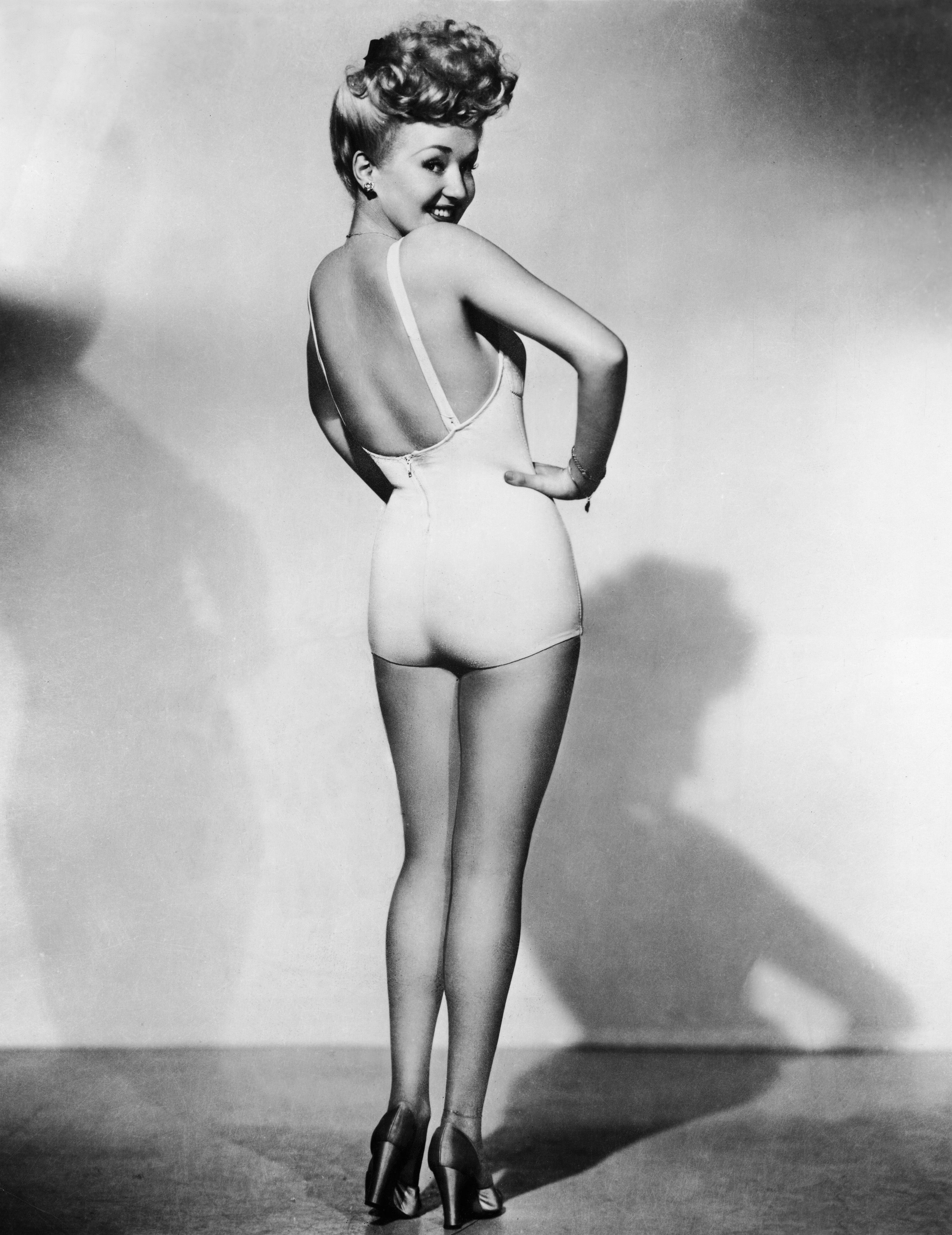
Grable's success as a pin-up girl further propelled her career as a mainstream movie star. As her fame grew, Fox chief Darryl F. Zanuck sought to broaden her acting range, attempting on multiple occasions to cast her in more challenging roles. However, Grable was reluctant, feeling insecure about her talent and unwilling to accept roles she believed demanded too much of her. Zanuck ultimately acceded to Grable's request not to alter her successful screen formula. Consequently, the studio prepared the film Pin Up Girl for her. In this lavish musical, Grable played a hostess at a USO canteen who entertained troops. The film extensively used her pin-up photograph, which further boosted the photo's sales. Many of the film's later scenes had to be rewritten to conceal Grable's pregnancy. Pin Up Girl, co-starring comedians Martha Raye and Joe E. Brown, was released in April 1944 to overwhelming box-office success, though critics were less enthusiastic. Variety noted that the film "makes no pretenses of ultra-realism" but also called it "very pleasing and pleasant."
After taking time off for the birth of her daughter, Grable returned to Fox to star in Billy Rose's Diamond Horseshoe (1945), alongside Dick Haymes and Phil Silvers. Although the film grossed over 3.00 M USD at the box office, its high production costs made it difficult to turn a profit. Her next film, The Dolly Sisters (1945), paired her with newcomer June Haver, an actress Fox was promoting as Grable's potential successor. Despite press speculation about a tense rivalry, both actresses denied it, asserting they were good friends. The Dolly Sisters earned over 4.00 M USD at the box office, making it Fox's second-highest-grossing film of the year, only behind Leave Her to Heaven.
After five years of continuous work, Grable was granted an extended vacation. She briefly returned to filming for a cameo in Do You Love Me (1946), appearing as a fan of her husband Harry James' character. Grable was hesitant to resume her film career, but Fox desperately needed her return, as the studio struggled financially without the significant profits generated by her movies. The Shocking Miss Pilgrim (1947) was her first film back at Fox, in which she played Cynthia Pilgrim, a college student who graduated at the top of her typewriting class during the first year of the Packard Business College. While critics acknowledged moments of brilliance, they found the film's music uninspired. The film also suffered from indifferent ticket sales and incurred losses. Grable then starred in Walter Lang's Mother Wore Tights, released in September 1947, co-starring Dan Dailey. This film, which told the story of two aging vaudeville performers reminiscing about their heyday through flashbacks, received critical acclaim and was a box-office hit, earning an estimated 5.00 M USD.
Grable was cast in That Lady in Ermine (1948), a project previously considered for Jeanette MacDonald or Gene Tierney. It co-starred Douglas Fairbanks Jr. and was initially directed by Ernst Lubitsch. Following Lubitsch's death early in production, Otto Preminger took over. Reports indicated that Grable frequently quarreled with Fairbanks and Preminger and nearly walked off set but decided against it on her agent's advice. Upon its release, the film received mixed reviews, described as "a bright and beguiling swatch of nonsense," and did not generate the revenue Fox had hoped for. Immediately afterward, Grable began filming When My Baby Smiles at Me (1948), again co-starring Dan Dailey. This film became a blockbuster, solidifying Grable and Dailey's status as a bankable movie duo. Closing the decade, Grable starred in The Beautiful Blonde from Bashful Bend (1949), an unusual film that unevenly blended musical numbers with Western clichés. Despite a cast including Cesar Romero and Rudy Vallée, the film was panned by critics but achieved reasonable success at the box office.
3.4. Decline and Later Films (1950-1955)
Betty Grable had been consistently ranked in the "Top Ten Money Making Stars Poll" every year since 1942, reaching the top spot in 1943 and second place in 1947 and 1948. However, in 1949, her popularity slipped from second to seventh place within the top 10. This decline led Fox to worry that Grable might be perceived as outdated. In response, Darryl F. Zanuck had the film Wabash Avenue (1950) specifically tailored to Grable's talents. The film's plot closely resembled her earlier hit Coney Island (1943), but with new songs and modernized choreography. Wabash Avenue was released in May 1950 and became a box-office hit. My Blue Heaven, released in December 1950, reunited her with Dan Dailey and was equally successful financially. By 1950, Grable had regained her position as the most popular female at the box office, ranking fourth overall, behind John Wayne, Bob Hope, and Bing Crosby.
By the early 1950s, Grable was actively seeking more original scripts but struggled to find the roles she desired. She reluctantly agreed to make Call Me Mister (1951) with Dan Dailey, a loose musical remake of A Yank in the R.A.F.. The film achieved moderate success and was quickly followed by Meet Me After the Show (1951), co-starring Macdonald Carey, Rory Calhoun, and Eddie Albert. This film received favorable reviews from most critics and was a box-office success.
In 1952, Grable began renegotiating her contract with Fox, demanding a higher salary and the freedom to choose her film projects. The studio refused her terms, leading her to go on strike. As a result, she was replaced by Marilyn Monroe in the movie adaptation of Gentlemen Prefer Blondes (1953) and by June Haver in the musical comedy The Girl Next Door (also 1953).

After a year away from filming, Grable reluctantly reconciled with Fox and agreed to star in a musical remake of The Farmer Takes a Wife (1953). This film was an attempt by Fox to restore Grable's reputation as the studio's biggest star, but despite being paired with Dale Robertson, it proved to be a critical and box-office flop.
Her next role was in How to Marry a Millionaire (1953), a romantic comedy about three models plotting to marry wealthy men, co-starring Marilyn Monroe and Lauren Bacall. During production, false rumors circulated about a rivalry between Grable and Monroe, with some assuming Grable, whose career was declining, was jealous of Monroe's rising stardom. In reality, Grable and Monroe got along famously, with Grable reportedly telling Monroe, "Go and get yours, honey! I've had mine!" How to Marry a Millionaire was a significant box-office triumph upon its release, grossing an estimated 8.00 M USD.
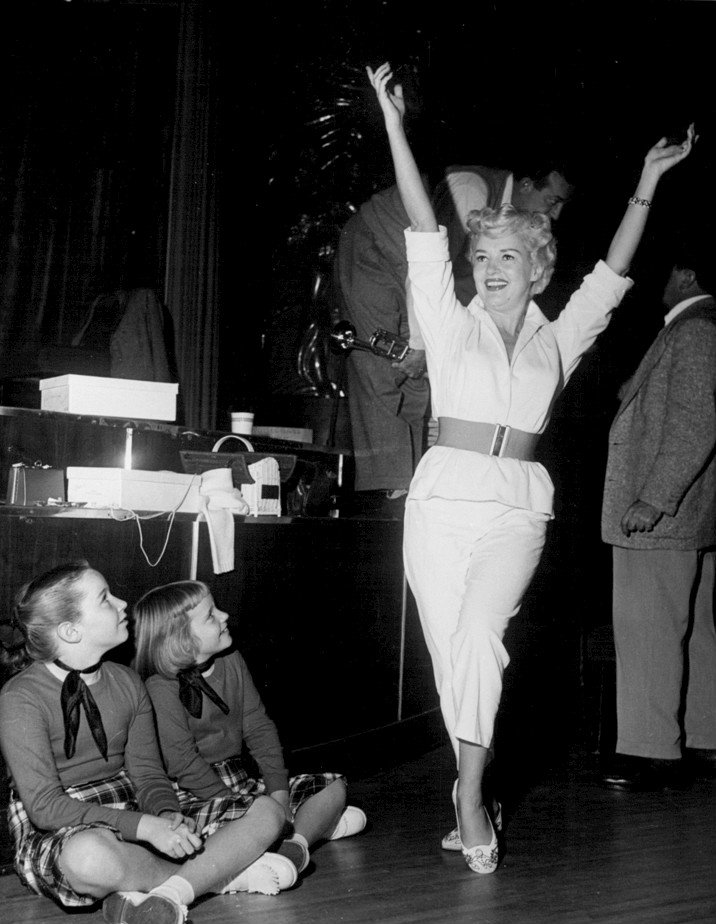
After refusing the leading female role in Irving Berlin's There's No Business Like Show Business (1954), Grable was again suspended from her contract. The following year, she appeared in Three for the Show (1955) for Columbia Pictures, marking her first film made away from Fox in over 15 years. The film featured rising actor Jack Lemmon and dancers Marge and Gower Champion. Critics described the film as "a slight, but cheerful, item" that "does serve to bring Betty Grable back to the screen." It achieved reasonable success at the box office, particularly overseas. She then agreed to make How to Be Very, Very Popular (1955) for Fox, under the assurance that Marilyn Monroe would be her co-star. When Monroe withdrew from the production, she was replaced by Sheree North. Despite a massive publicity campaign surrounding its release, the film failed to meet expectations, with critics noting a lack of chemistry between Grable and North. Nevertheless, it was a box-office hit, earning over 3.70 M USD. This proved to be Grable's final film appearance. In 1955, she attempted to return to acting in Samuel Goldwyn's film version of Guys and Dolls (1955), hoping to play the role of Miss Adelaide, but the part went to Vivian Blaine, who had originated the role on Broadway. She then officially retired from motion-picture acting.
3.5. Post-Film Career
After retiring from Hollywood films, Betty Grable found a new career performing her own act in Las Vegas hotels, often alongside her then-husband, musician Harry James. She later starred in major Las Vegas stage productions, including a long run in Hello, Dolly!. She also appeared on Broadway in Hello, Dolly! in 1967.
4. Personal Life
Betty Grable's personal life involved two marriages and a significant later relationship, which produced two daughters.
4.1. Marriages and Relationships
Grable's first marriage was in 1937 to former child actor Jackie Coogan. Their marriage was strained by Coogan's significant stress from a lawsuit against his parents regarding his childhood earnings, and they divorced in 1939.
In 1943, she married trumpeter Harry James. Their marriage, which lasted for 22 years until their divorce in 1965, was reportedly plagued by issues of alcoholism and infidelity.
Following her divorce from James, Grable entered into a relationship with dancer Bob Remick, who was 27 years her junior. They remained together until her death in 1973.
4.2. Children
During her marriage to Harry James, Betty Grable had two daughters: Victoria Elizabeth "Vicki" James Bivens and Jessica James Yahner.
5. Death
Betty Grable's life concluded in 1973 due to lung cancer.
5.1. Cause and Circumstances
Betty Grable died of lung cancer on July 2, 1973, at the age of 56. She passed away in Santa Monica, California.
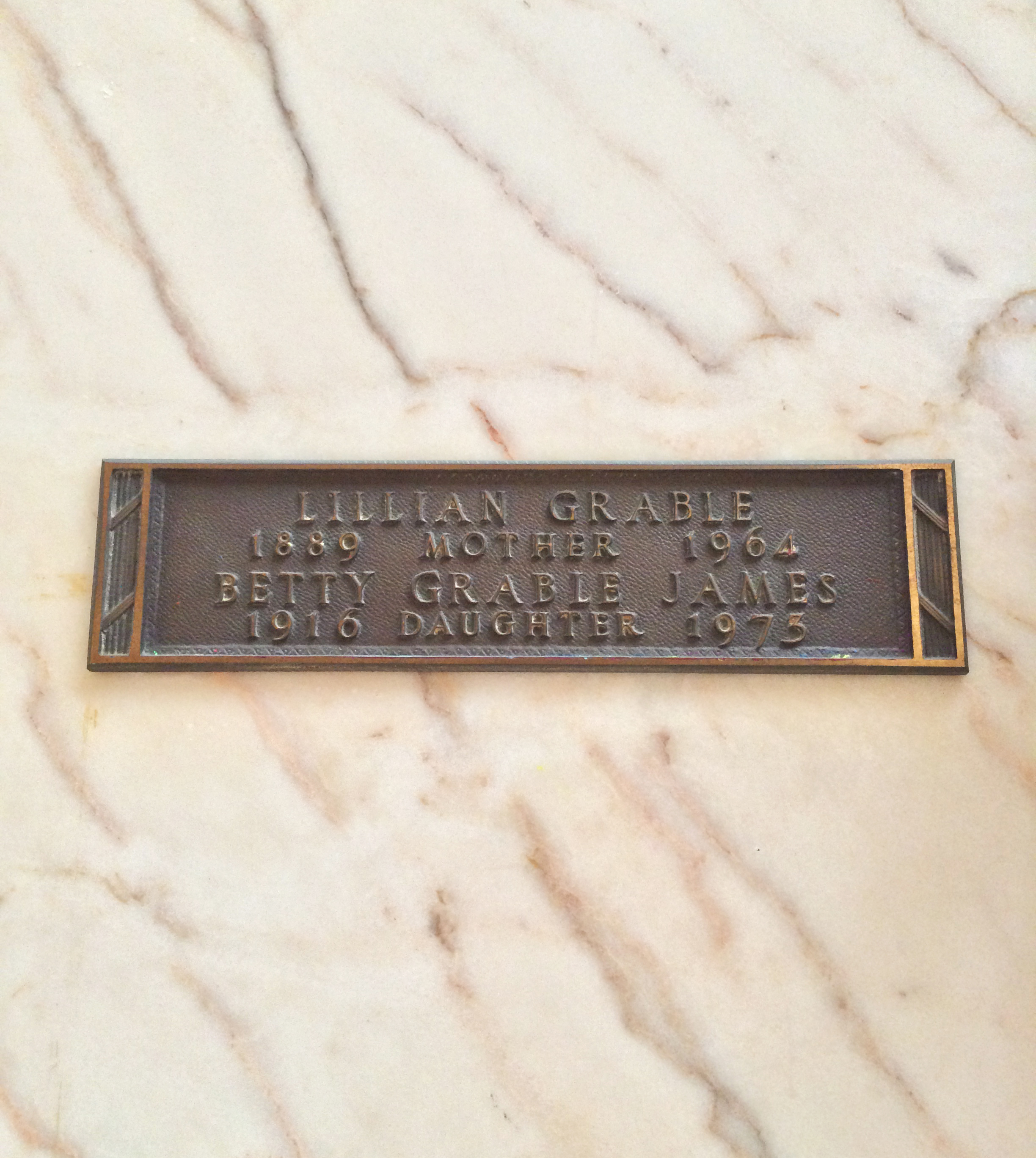
5.2. Funeral and Post-Mortem Reactions
Her funeral service was held two days after her passing. Notable attendees included both of her former husbands, Jackie Coogan and Harry James, as well as a host of Hollywood stars such as Dorothy Lamour, Shirley Booth, Mitzi Gaynor, Don Ameche, Cesar Romero, George Raft, Alice Faye, Johnnie Ray, and Dan Dailey. During the ceremony, the ballad "I Had the Craziest Dream" from her film Springtime in the Rockies was played on the church organ. She was entombed at Inglewood Park Cemetery in Inglewood, California.
6. Legacy and Cultural Impact
Betty Grable's enduring influence on popular culture stems primarily from her iconic status during World War II and her celebrated image.
6.1. Cultural Influence
Throughout her career, Betty Grable was a celebrated sex symbol. Her bathing-suit poster became the definitive pin-up image of World War II, surpassing the popularity of Rita Hayworth's famous 1941 photograph. This iconic photo was later included in Life magazine's "100 Photographs that Changed the World" project and was also named one of Time magazine's 100 Most Influential Photographs of All Time. Her famed "million dollar legs," which were insured by her studio for 1.00 M USD as a publicity stunt, became synonymous with her image.
Grable's cultural presence extended into various forms of media. Two war films set in December 1944 make direct reference to her 1943 marriage to Harry James:
- In Battleground (1949), set during the Battle of the Bulge, members of a 101st Airborne Division squad, suspicious of German soldiers disguised as American G.I.s, demand extra information during a challenging password exchange, referencing her marriage.
- In Stalag 17 (1953), a POW character is infatuated with Grable, keeping her photos above his bunk, and expresses melancholic disappointment upon mentioning her marriage to "some orchestra leader."
Her name was also referenced in the American television sitcom Our Miss Brooks in the episode "Lulu, the Pin-Up Boat," where a character mistakes her pin-up photo for a discussion about a boat. In the American television sitcom Community, elderly student Pierce Hawthorne mentions her full name in an attempt to impress his younger classmates. Grable's image also adorned the nose art of the Boeing B-17 Flying Fortress Sentimental Journey. Furthermore, the Malay song Dengar Ini Cerita by P. Ramlee references "Betty Grable" when describing a secretary named Mary who resembles the actress.
6.2. Honors and Recognition
Betty Grable received several significant honors and recognitions throughout her life and posthumously. She was awarded a star on the Hollywood Walk of Fame at 6525 Hollywood Boulevard. Additionally, she has a star on the St. Louis Walk of Fame in her hometown. Grable was also inducted into the Hall of Famous Missourians, acknowledging her contributions and impact.
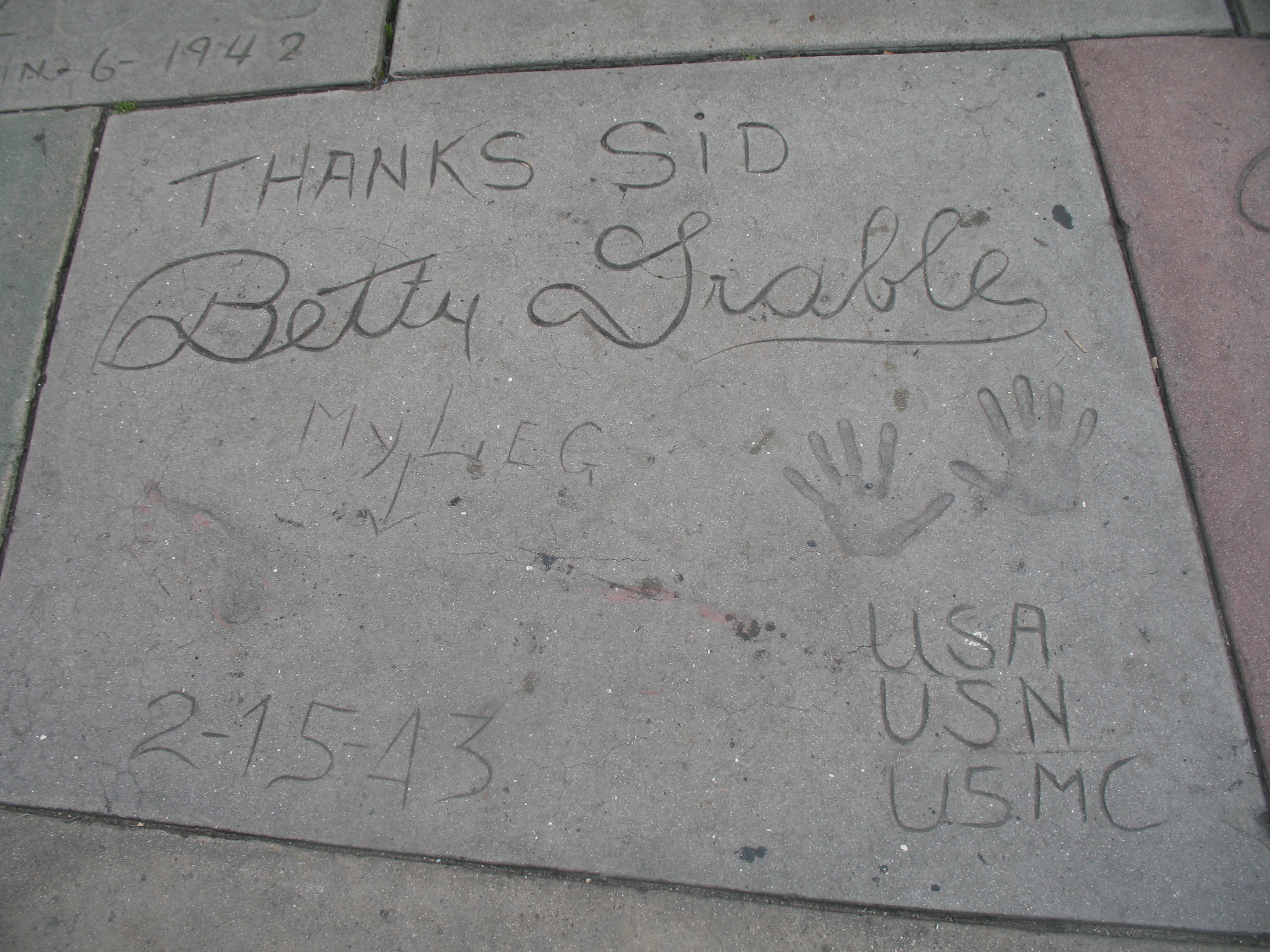
A few months after her death, in 1974, singer Neil Sedaka memorialized her in a track from his album Laughter in the Rain.
7. Filmography
Betty Grable appeared in numerous films throughout her career.
| Year | Title | Role | Notes |
|---|---|---|---|
| 1929 | Happy Days | Chorus girl | Uncredited |
| 1930 | Let's Go Places | Chorus girl | Uncredited |
| 1930 | New Movietone Follies of 1930 | Chorus girl | Uncredited |
| 1930 | Whoopee! | Goldwyn Girl | Uncredited |
| 1931 | Palmy Days | Goldwyn Girl | Uncredited |
| 1932 | The Greeks Had a Word for Them | Hat check girl | Uncredited |
| 1932 | Probation | Ruth | Credited role |
| 1932 | The Kid from Spain | Goldwyn Girl | Uncredited |
| 1933 | Cavalcade | Girl on couch | |
| 1934 | The Gay Divorcee | Dancer in Continental Number | |
| 1936 | Collegiate | Dorothy | |
| 1936 | Follow the Fleet | Singer | |
| 1936 | Pigskin Parade | Laura Watson | |
| 1937 | This Way Please | Jane Morrow | |
| 1938 | College Swing | Betty | |
| 1938 | Give Me a Sailor | Nancy Larkin | |
| 1938 | Campus Confessions | Joyce Gilmore | |
| 1939 | Million Dollar Legs | Carol Parker | |
| 1940 | Down Argentine Way | Glenda Crawford | |
| 1940 | Tin Pan Alley | Lily Blane | |
| 1941 | Moon Over Miami | Kay Latimer | |
| 1941 | A Yank in the R.A.F. | Carol Brown | |
| 1941 | I Wake Up Screaming | Jill Lynn | |
| 1942 | Song of the Islands | Eileen O'Brien | |
| 1942 | Footlight Serenade | Pat Lambert | |
| 1942 | Springtime in the Rockies | Vicky Lane | |
| 1943 | Coney Island | Kate Farley | |
| 1943 | Sweet Rosie O'Grady | Madeleine Marlowe / Rosie O'Grady | |
| 1944 | Pin Up Girl | Lorry Jones | |
| 1945 | Billy Rose's Diamond Horseshoe | Bonnie Devine | |
| 1945 | The Dolly Sisters | Jenny Dolly | |
| 1946 | Do You Love Me | Herself | Cameo |
| 1947 | The Shocking Miss Pilgrim | Cynthia Pilgrim | |
| 1947 | Mother Wore Tights | Myrtle McKinley Burt | |
| 1948 | That Lady in Ermine | Francesca / Angelina | |
| 1948 | When My Baby Smiles at Me | Bonnie Kane | |
| 1949 | The Beautiful Blonde from Bashful Bend | Freddy | |
| 1950 | Wabash Avenue | Ruby Summers | |
| 1950 | My Blue Heaven | Kitty Moran | |
| 1951 | Call Me Mister | Kay Hudson | |
| 1951 | Meet Me After the Show | Delilah Shayne | |
| 1953 | The Farmer Takes a Wife | Molly Larkins | |
| 1953 | How to Marry a Millionaire | Loco Dempsey | |
| 1955 | Three for the Show | Julie Lowery | |
| 1955 | How to Be Very, Very Popular | Stormy Tornado | Final film role |
8. Stage and Radio Work
Betty Grable also had a notable career in stage productions and made various appearances on radio programs.
- Tattle Tales (1932)
- Du Barry Was a Lady (Broadway, 1939)
- Guys and Dolls (1962-1964; 1968)
- High Button Shoes (1964)
- Hello, Dolly! (Broadway, 1965-1967; 1971)
- Born Yesterday (1968-1970; 1973)
- Belle Starr (1969)
| Year | Program | Episode/source |
|---|---|---|
| 1939 | The Pepsodent Show Starring Bob Hope | |
| 1942 | Command Performance | |
| 1946 | Lux Radio Theatre | Coney Island |
| 1949 | Suspense | The Copper Tea Strainer |
| 1950 | Screen Directors Playhouse | When My Baby Smiles at Me |
| 1952 | Lux Radio Theatre | My Blue Heaven |
9. Biographies
Several biographical works have been written about Betty Grable's life and career:
- Billman, Larry. Betty Grable: A Bio-bibliography. Greenwood Press, 1993.
- McGee, Tom. Betty Grable: The Girl with the Million Dollar Legs. Vestal Press, 1994.
- Warren, Doug. Betty Grable: The Reluctant Movie Queen. St. Martin's Press, 1981.